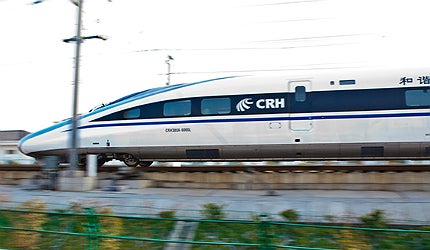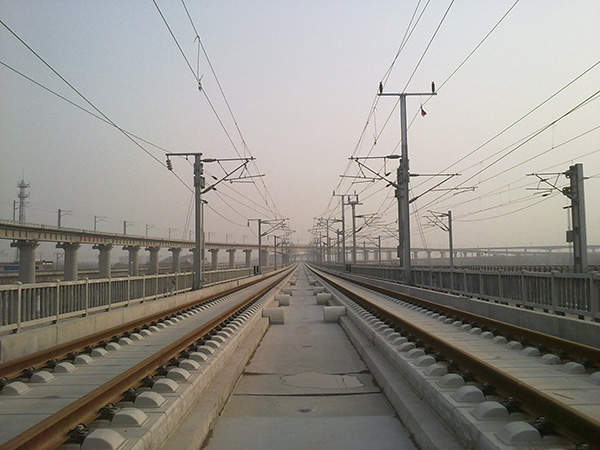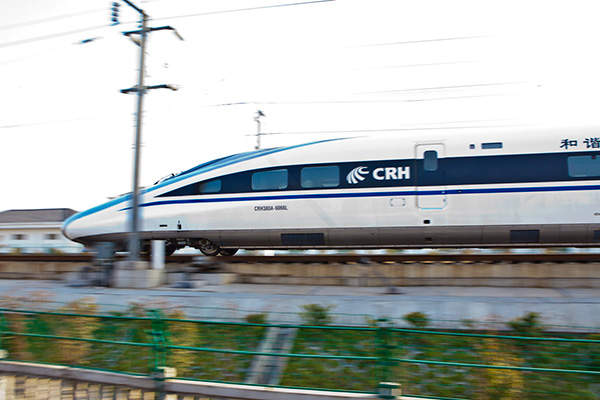
China has crossed another milestone in its high-speed railway network development, with the inauguration of the Beijing-Guangzhou high-speed railway line in December 2012.
The Beijing-Guangzhou railway line is the world’s longest high-speed railway line, as of December 2012. It stretches 2,298km (1,425 miles) in length and can accommodate trains travelling with average speeds of 300kmph. The line reduces travel times to eight hours, as compared to the 22 hours it takes on traditional railway lines.
The line was a part of nationwide project that would bring 18,000km of high-speed rail to China by 2015. The line is part of China Railway High-speed (CRH), China’s high-speed railway network.
China Railways is expected to operate 155 pairs of trains on the Beijing-Guangzhou line with a frequency of one train for every half an hour.
Construction of the Beijing-Guangzhou line
Construction on the high-speed line from Beijing to Guangzhou started in 2005. The line is divided into four sections, namely the Wuhan-Guangzhou Section, Shijiazhuang-Wuhan Section, Beijing-Shijiazhuang Section and Guangzhou-Shenzhen-Hong Kong Section.
The 968km long Wuhan-Guangzhou Section was opened to traffic in December 2009. The 102km long first part of the 146km Guangzhou-Shenzhen-Hong Kong Section between Guangzhou and Shenzhen was opened in January 2012. The whole section is expected to be completed by 2015.
The construction cost of the remaining section up to Hong Kong is estimated to be $8.6bn. All the other sections were inaugurated in late 2012.
Construction of the Beijing-Guangzhou line was slowed down after July 2011 following a train crash incident on one of the high-speed rail lines of the country. The crash caused the death of 39 people and injuries to approximately 200 people. Flaws in integration of signalling system with the local equipment was quoted to be the reason behind the crash.
The construction of the Beijing-Guangzhou line was, however, resumed and accelerated in 2012.
Beijing-Guangzhou railway line routes
The Beijing-Guangzhou line passes through the provinces of Hebei, Henan, Hubei, Hunan and Guangdong and provides a high speed transport link for cities including Beijing, Shijiazhuang, Zhengzhou, Wuhan, Changsha, Guangzhou, Shenzhen and Hong Kong.
The high-speed rail line has 35 stops, 28 of which are major cities of China. It passes through major railway stations such as Beijing West station, Shijiazhuang station, Zhengzhou East station, Wuhan railway station, Changsha South railway station, Guangzhou South station, Shenzhen North station and West Kowloon.
The line also interconnects with other high-speed lines like Shijiazhuang – Taiyuan high speed line, Zhengzhou – Xi’an high speed line, Shanghai-Wuhan-Chengdu high-speed line and Guangzhou-Zhuhai high-speed line. It also has interconnections with Line 9 of the Beijing Subway, Line 2 of the Guangzhou Metro and few lines of Shenzhen Metro and Hong Kong MTR.
Rolling stock on China’s high-speed network
CRH380-AL rolling stock was selected for operations on the Beijing-Guangzhou high-speed railway line. CRH380-AL is a variant of the prominent Chinese high-speed rolling stock CRH380A.
It was designed by China South Locomotive & Rolling Stock Corporation (CSR) and is currently manufactured by CSR Qingdao Sifang Locomotive & Rolling Stock.
The train’s body resembles a fish head in the front. It is welded with aluminium alloy, which reduces the aerodynamic resistance and helps the train to attain speeds as high as 380kmph.
The train is 401.4m in length, 3.38m in width and 3.7m in height, and runs on a 1,435mm track gauge. It consists of 16 cars including 14 multiple units and two traction units at both ends. It has the capacity to accommodate 1,066 passengers.
The input power of 25kV 50Hz AC for traction is supplied by means of overhead catenary power supply and produces an output power of 20.44MW. The rolling stock has regenerative electronically controlled pneumatic brakes.
Related content
Beijing-Shanghai High-Speed Line, China
The 1,318km Beijing-Shanghai high-speed line connects the cities of Beijing, Shanghai and Tianjin, travelling across the provinces of Hebei, Shandong, Anhui and Jiangsu.
Guangzhou South Railway Station, China
The Guangzhou south railway station is located in Shibi Town in the Panyu district of Guangzhou, capital of the Guangdong province, at the heart of the Pearl River Delta.




